Our hotel in Takayama, Hidatei Hanaougi, is a ryokan. The hotel’s website lists ‘Heart-warming hospitality” as the Number 1 reason to stay there, and we couldn’t agree more. From the first moment we arrived, we felt welcomed, pampered and attended to. Where else does the general manager himself stand at the curb at the end of your stay waving good-bye until you are out of sight?
A ryokan (旅館?) is a type of traditional Japanese inn, with a special and specific way of providing services to guests. Ryokans originally served travelers in the Edo (shogun) period (1603–1868). We found our ryokan to exude and exemplify the subtle beauty of Japanese culture and custom. While they preserve age-old traditions, they also offer modern comforts and amenities.
At the entrance to the inn are soothing water features (including feet-soaking areas) and gorgeous wood sculptures that instantly convey calm and serenity, strength and beauty.
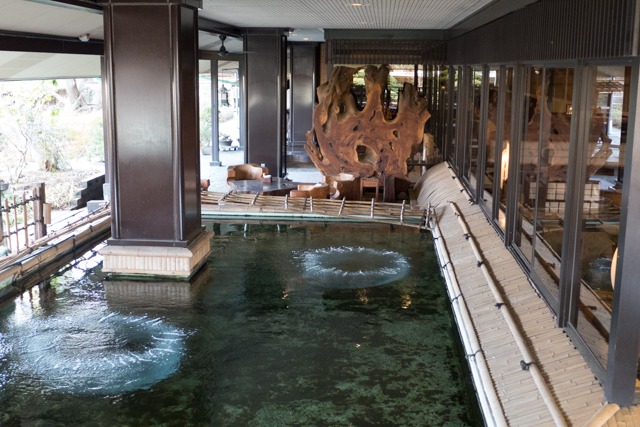
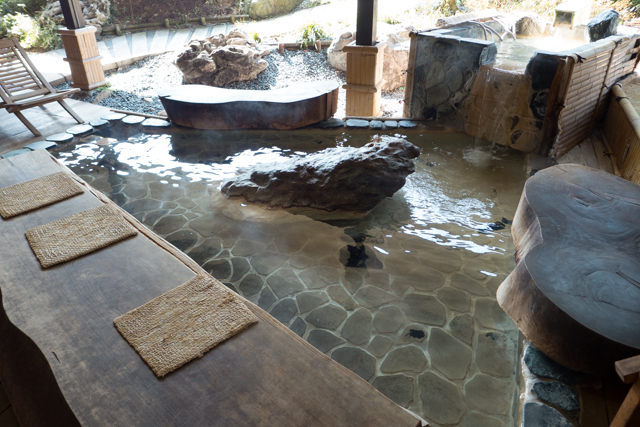
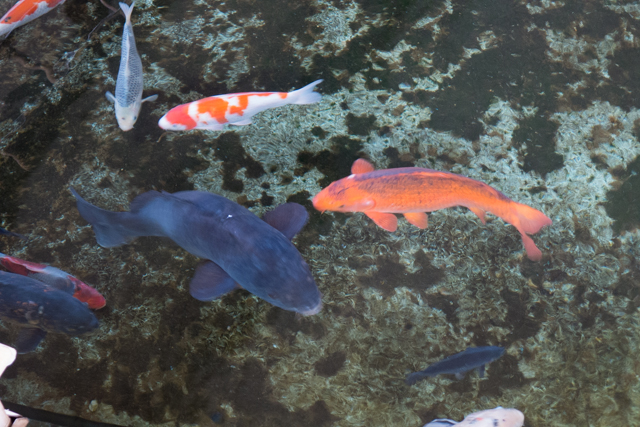
Once inside, we are requested to remove our shoes and step into the interior in our socks or provided slippers.
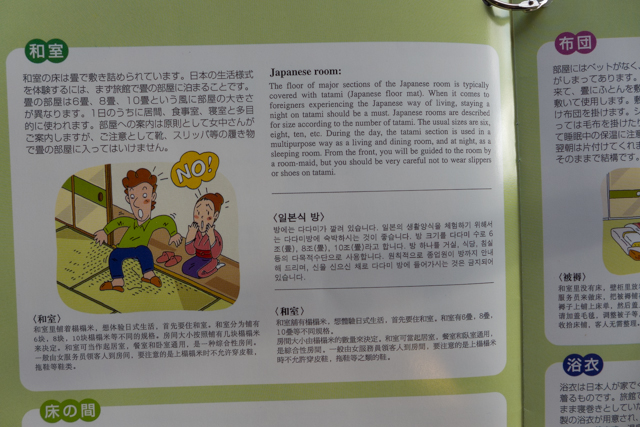
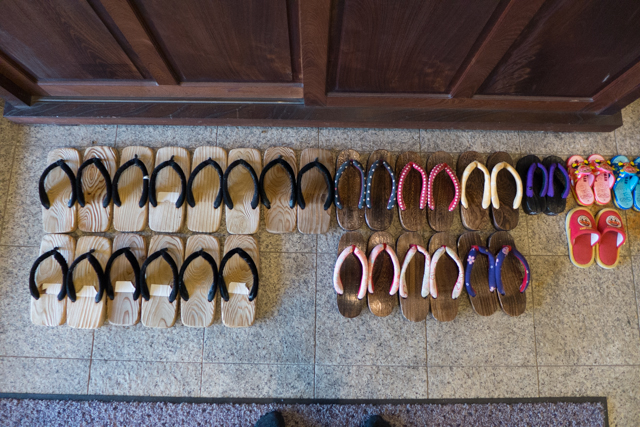
We are seated in the lounge area and served our choice of welcome beverage and snack, along with the ubiquitous warm moist washcloth that we have been provided in every restaurant and hotel.
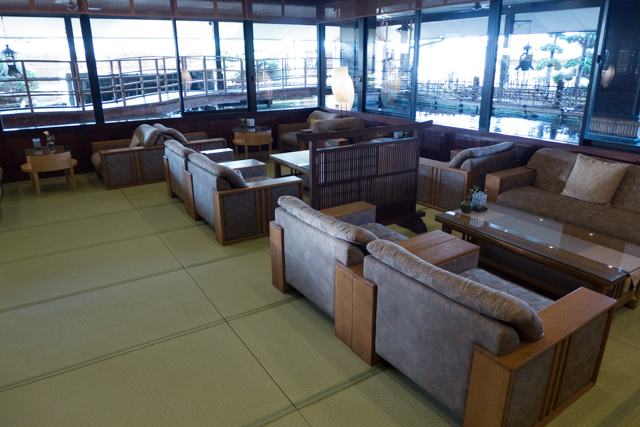
Both the hallways and the flooring of our room are covered with tatami, Japanese floor mats traditionally made with rice straw covered with soft rush straw.
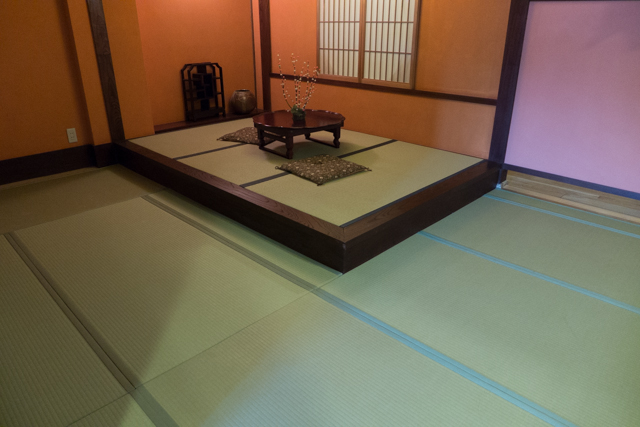
As we enter our room, our tatami section is used as a combo living/dining room, set up with tea service. While we are at dinner, our room is converted to a sleeping room. The sleeping accommodations include futons (thick padded blankets and mats wrapped in a sheet) and covered by a comforter in a coverlet. The nice thing about these is at least they are side-by-side (as opposed to the separate western beds in most of our hotels so far), but sleeping on the floor is wreaking havoc with Mark’s back (can you say ‘princess and the pea’?)
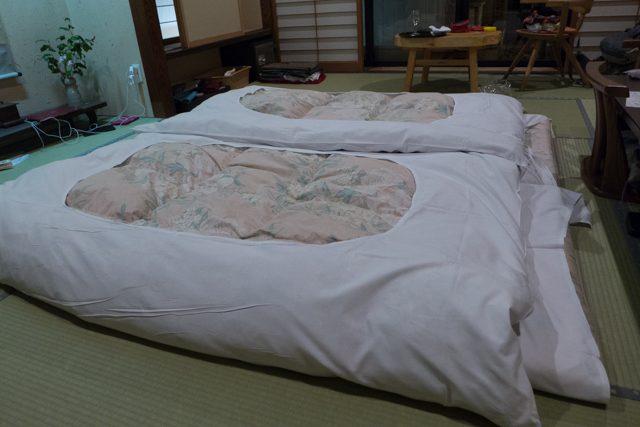
Our room has an alcove called a tokono-ma. It is a recessed area in which a kakejiku (a hanging scroll with a picture or writing) hangs and an ikebana (a flower arrangement) is displayed on a slightly raised floor.
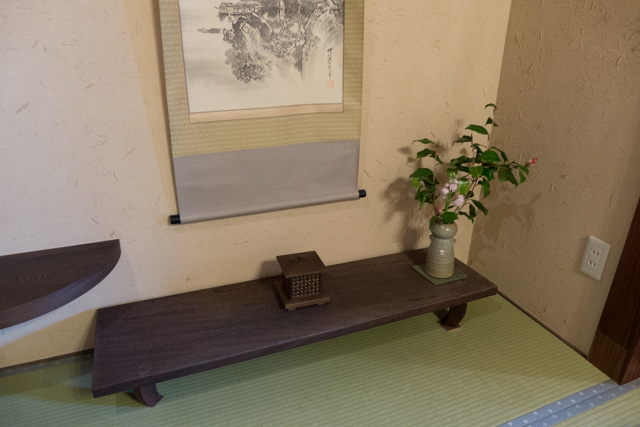
I’m really given over to ‘potty’ talk here as I’m loving the Japanese toilets… heated seats, lids that raise automatically as you enter the bathroom and close a few minutes after you leave, and several choices of flush volume, bidet levels, even pulsating spray on some models. Ahem. Oh, and slippers that remain on the floor for use in the commode area only.
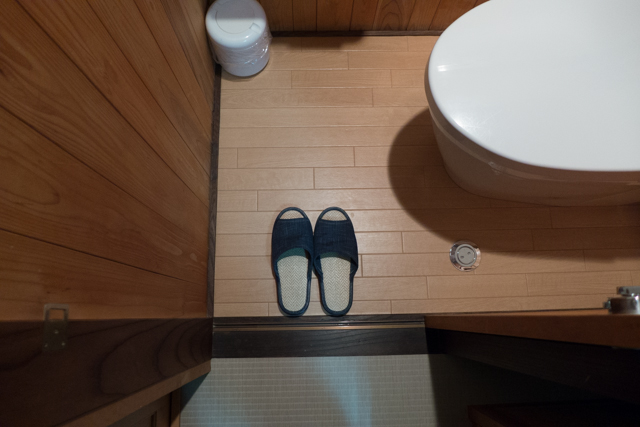
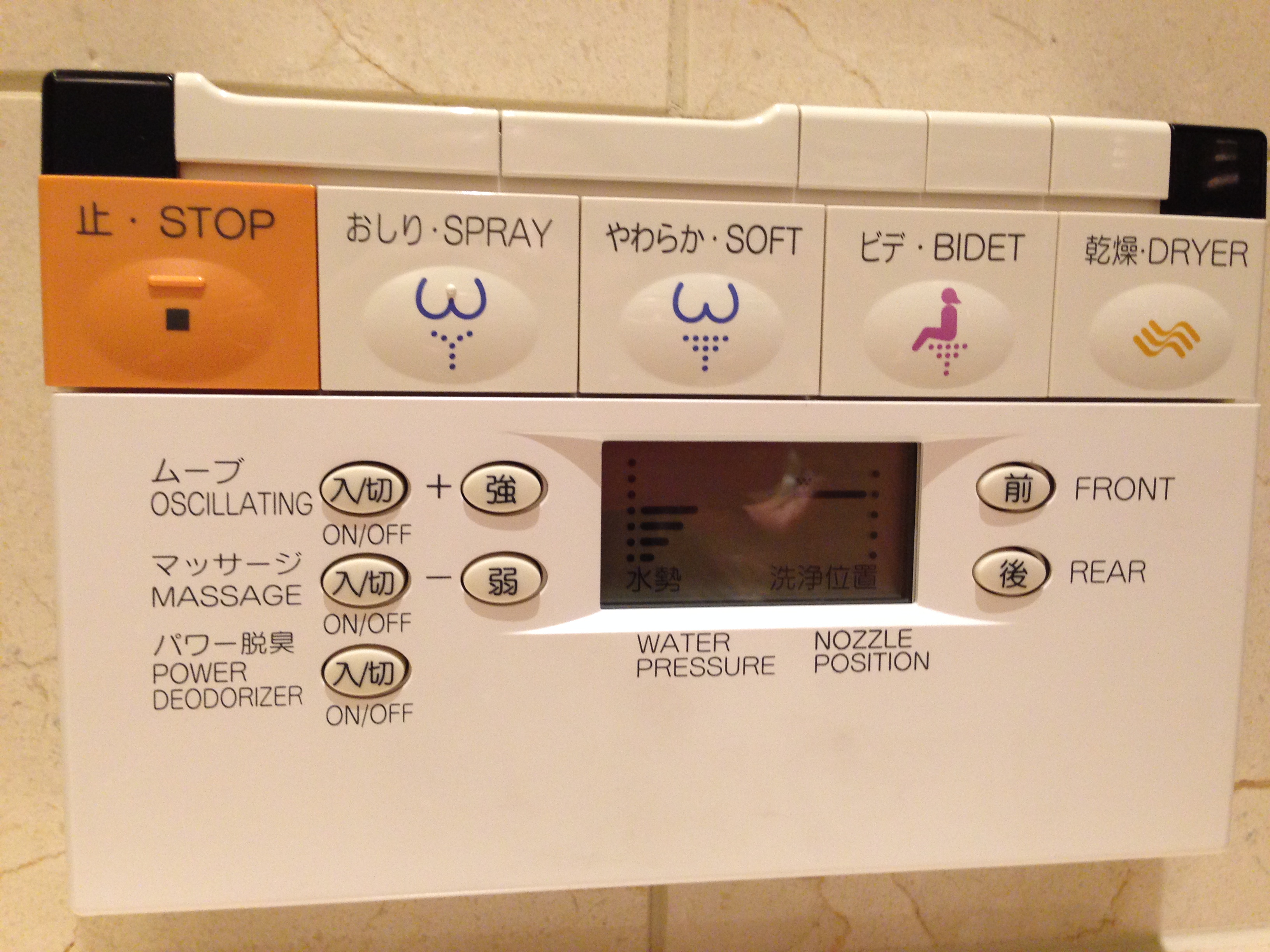
We have our own private dining room on a separate floor of the ryokan. Dinners are served as typical Japanese meals, with the added bonus of an elaborate HAND-DRAWN explanation of each and every dish being served. I guess the job description for the servers includes not only hospitality and English skills, but artistry too!
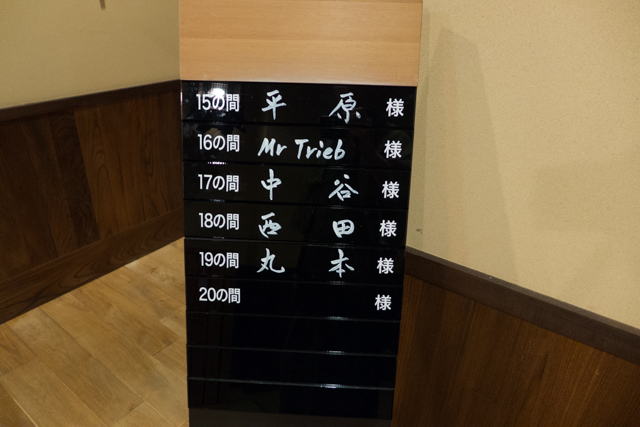
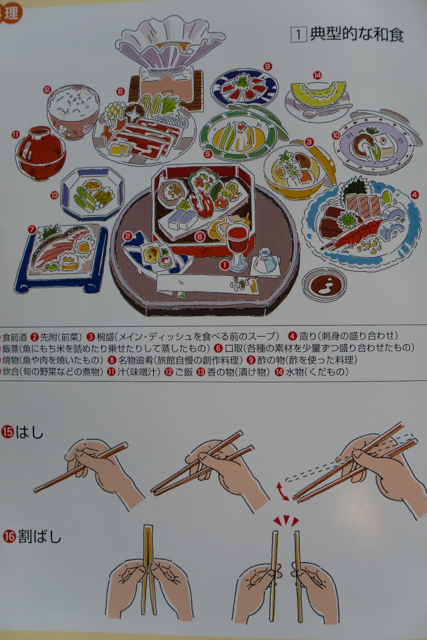
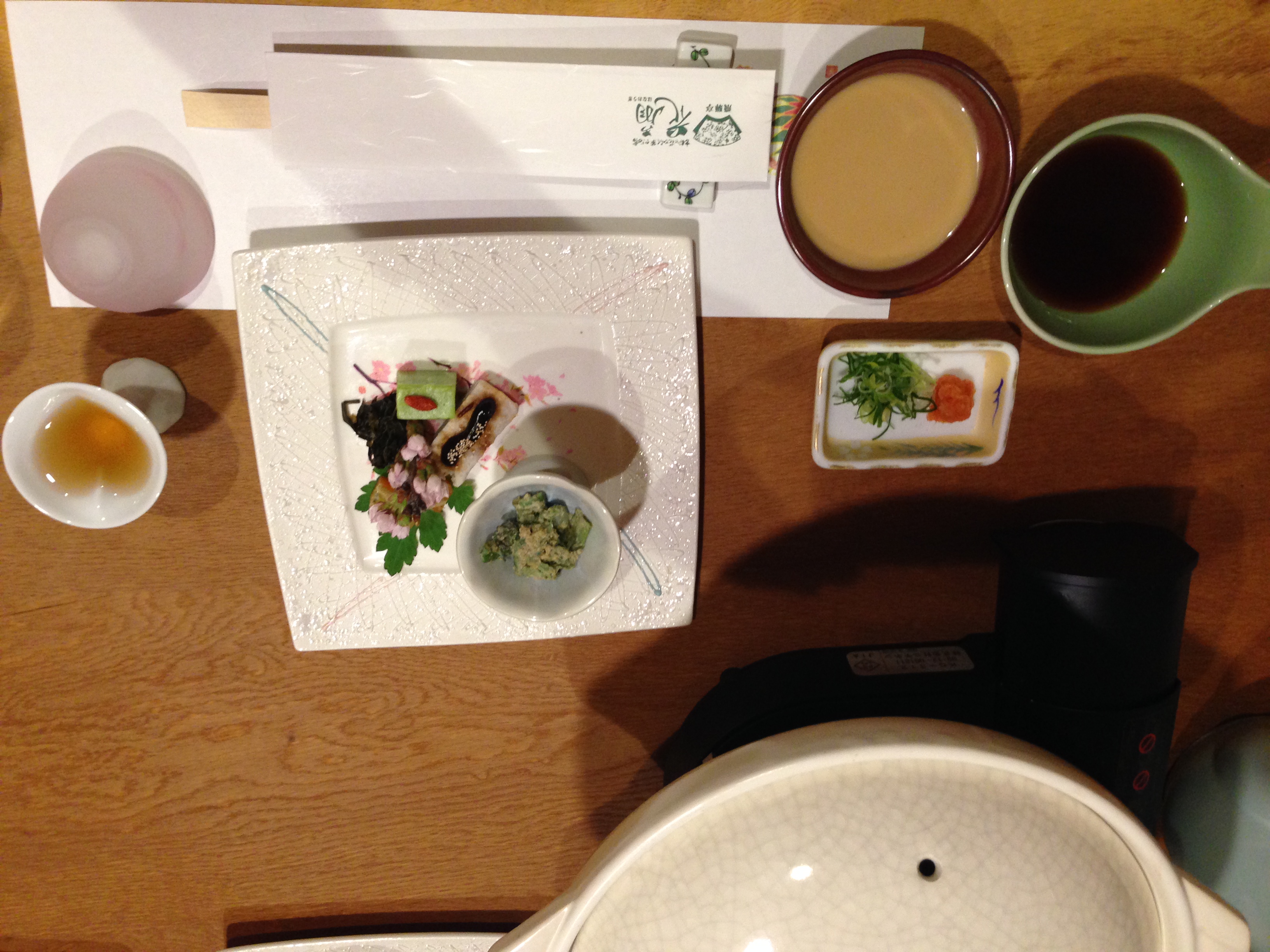

Though the first breakfast served was a Japanese-style meal, subsequent breakfast could be chosen as either Western or Japanese style. You may have guessed by now that we chose Western for our last two days at the ryokan. More coffee please.

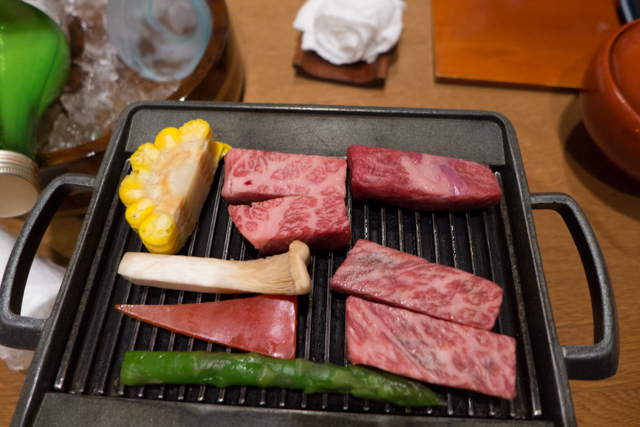

Dressing for dinner consists of donning our yukatas. A yukata is a light cotton kimono typically worn by the Japanese at home for relaxation. A tanzen – a padded jacket-like kimono – can also be worn over the yukata. The left side of the yukata is wrapped over the right side (commonly reversed with right over left when dressing a body for a funeral) and secured with an obi – sash – wrapped around and tied in a bow. The bow is in the front for men and in the back for women. Ladies, don’t get this wrong as traditionally bows in the front represented a prostitute.
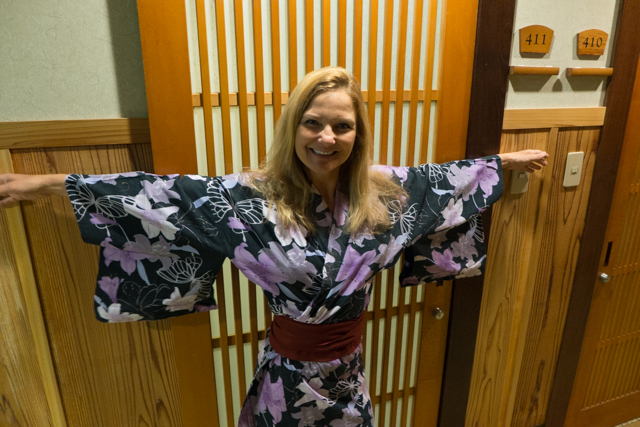
The Japanese are very fond of taking baths and soaking in hot tubs or hot springs. We have both a tub/shower area in our bathroom as well as our own private hot tub on our terrace. In addition, all but our urban hotels have had public bath areas, separated by men and women. Here, you may have a soak together with other inn guests. There are some pretty strictly-followed rules for the communal baths. You must wash with soap and hot water before entering the bath. You must not wash with soap in the bath. Do not put a towel with which you washed yourself into the bath. Do not immerse yourself wrapped in a towel in the bath. Do not shave in the bath. Do not stand while washing ourself (even outside the bath); seats are provided for the pre-washing ritual. And though it isn’t written, it goes unsaid (except here) – no peeing in the bath or the water will turn bright red to call you out!!
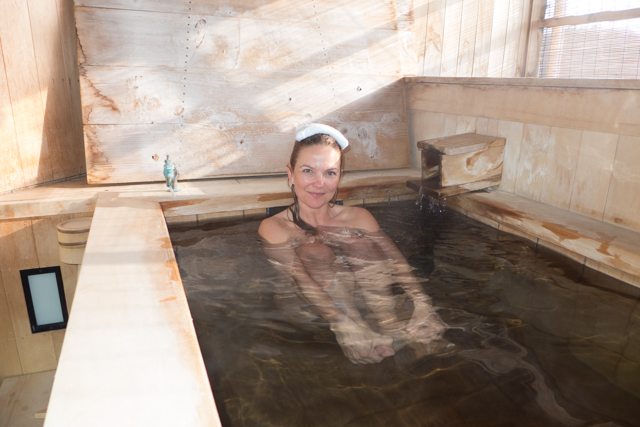
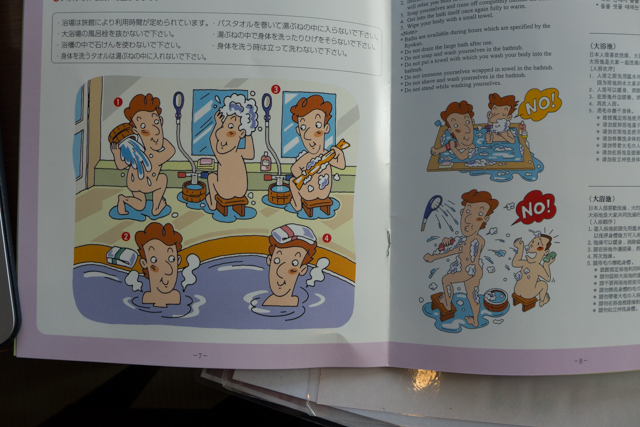
We highly recommend a stay at a ryokan, and if you are in Takayama, at Hidatei Hanaougi.
